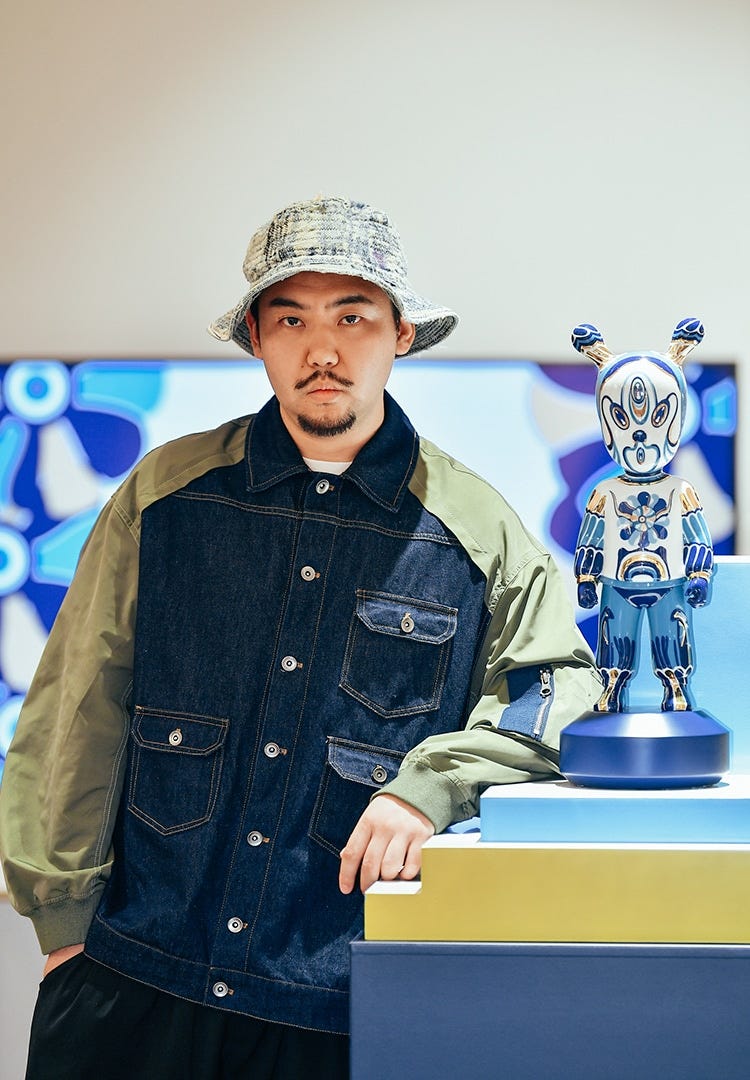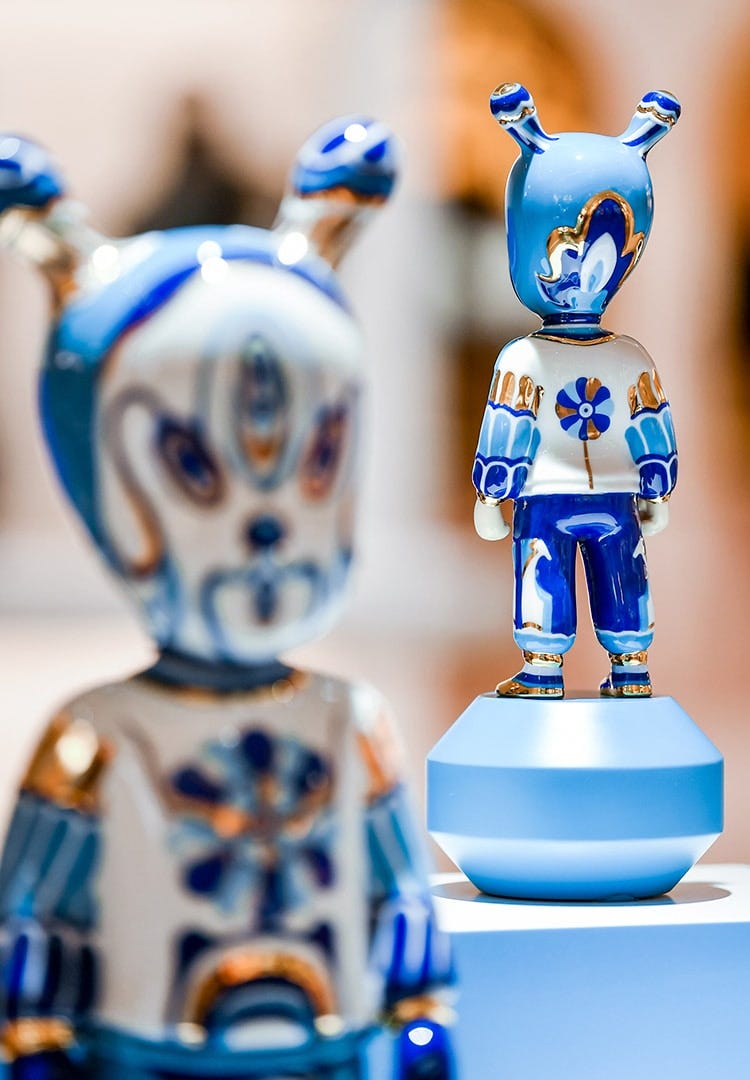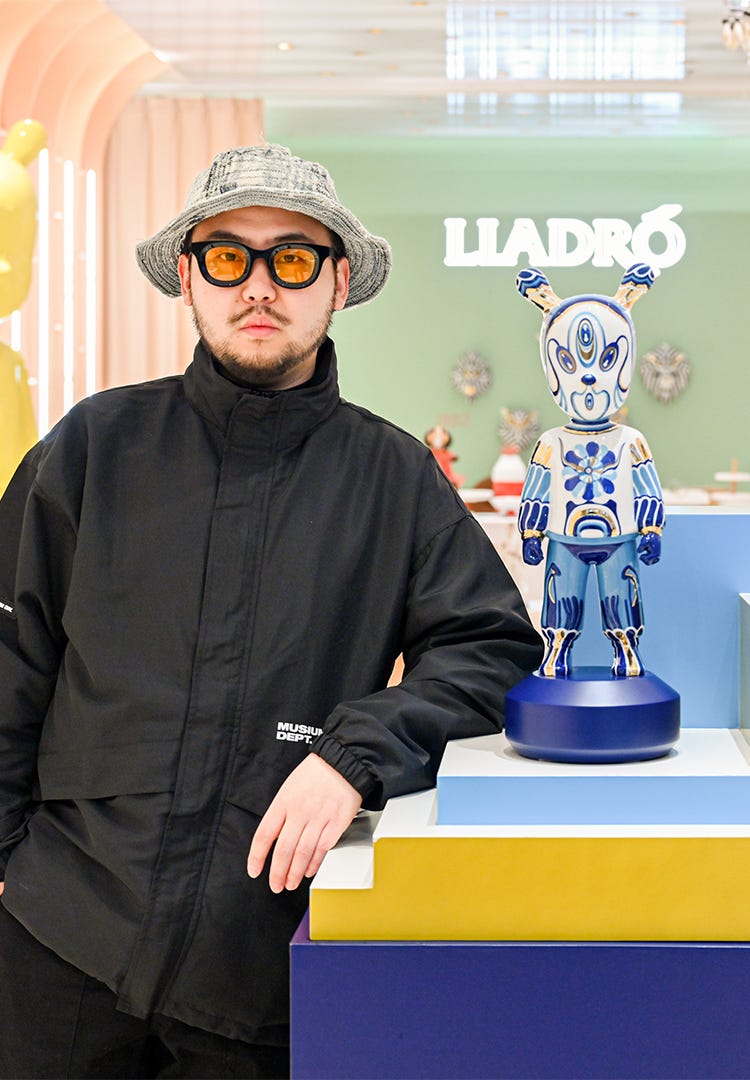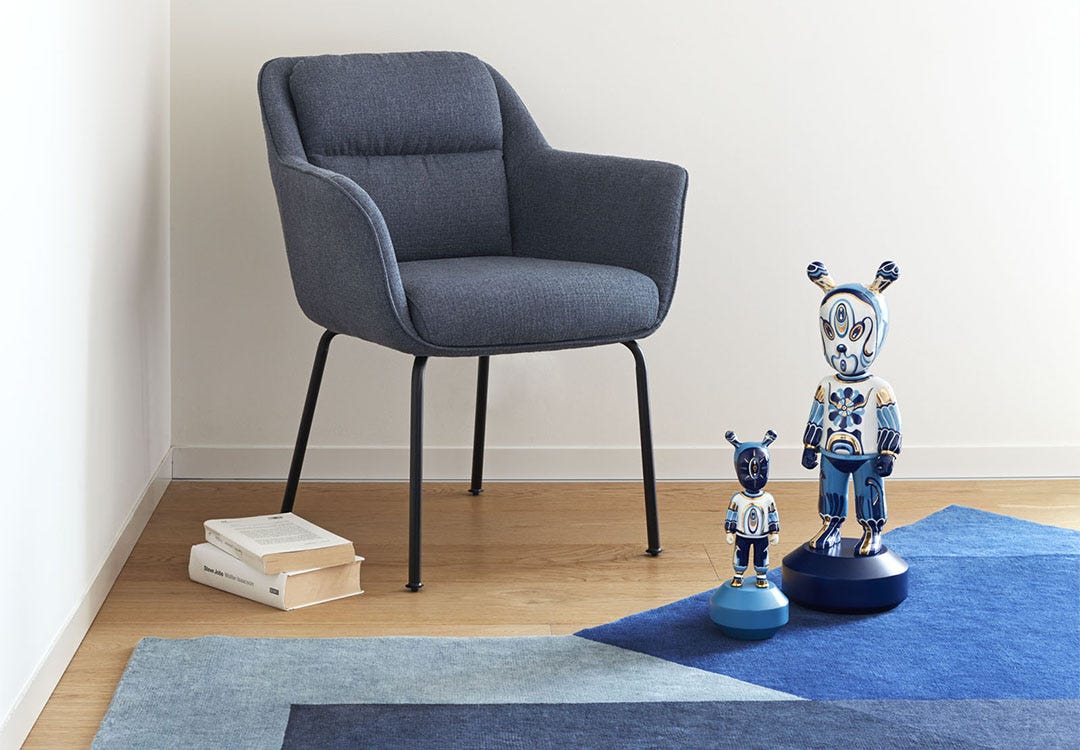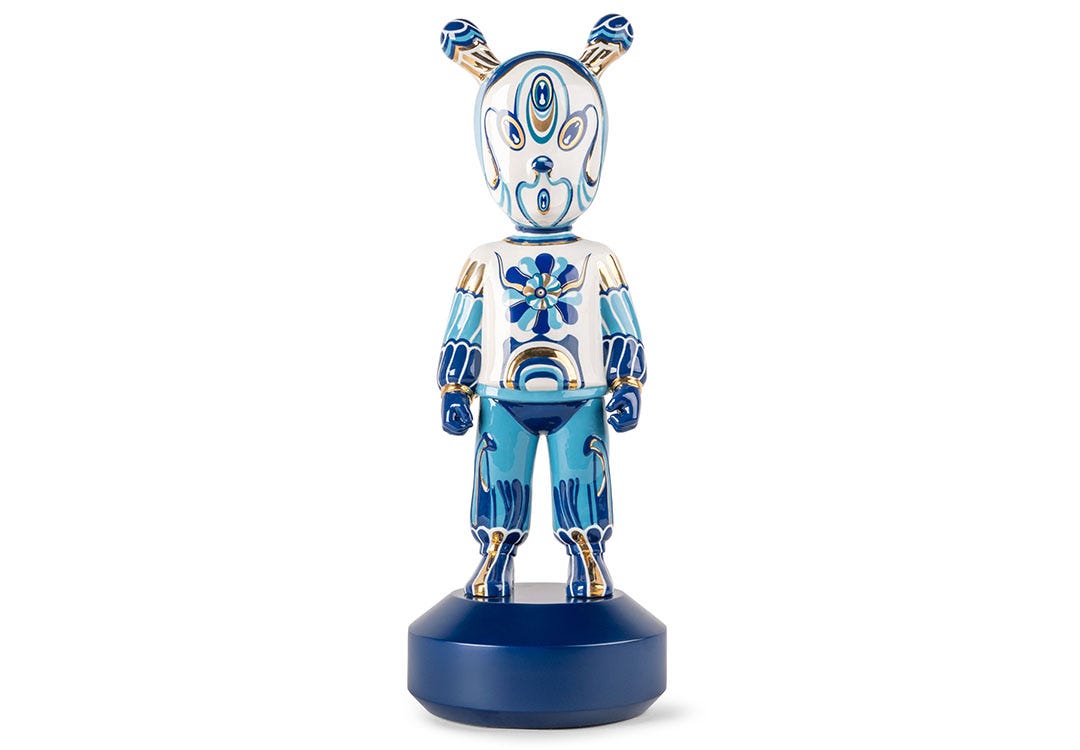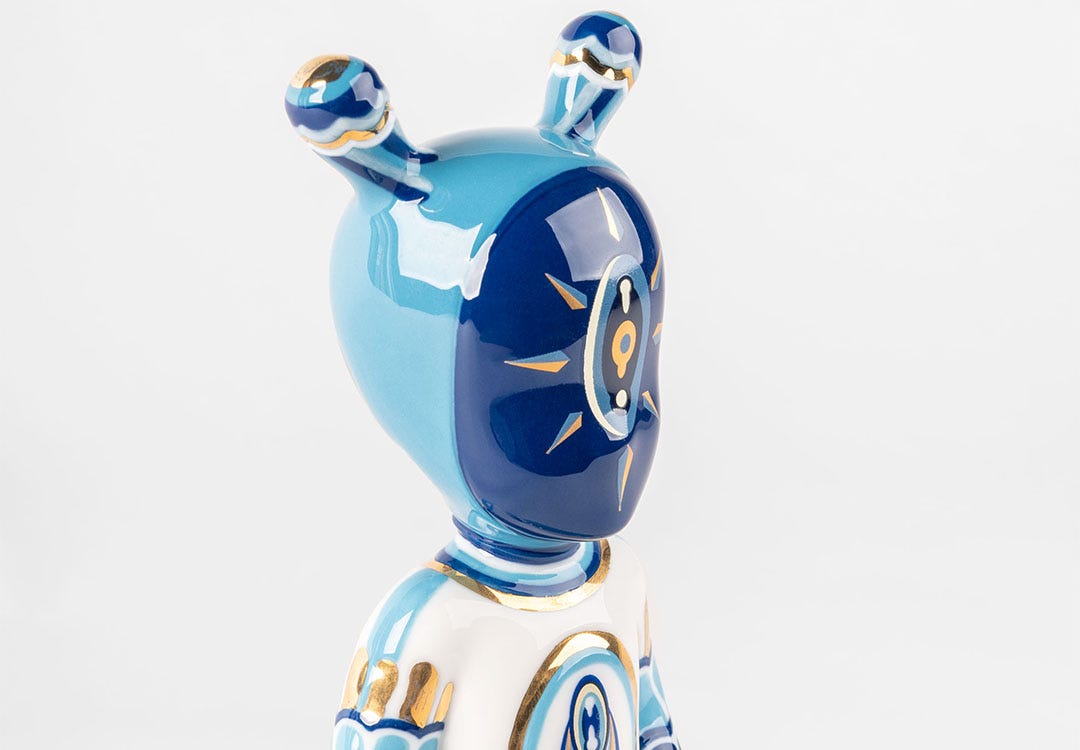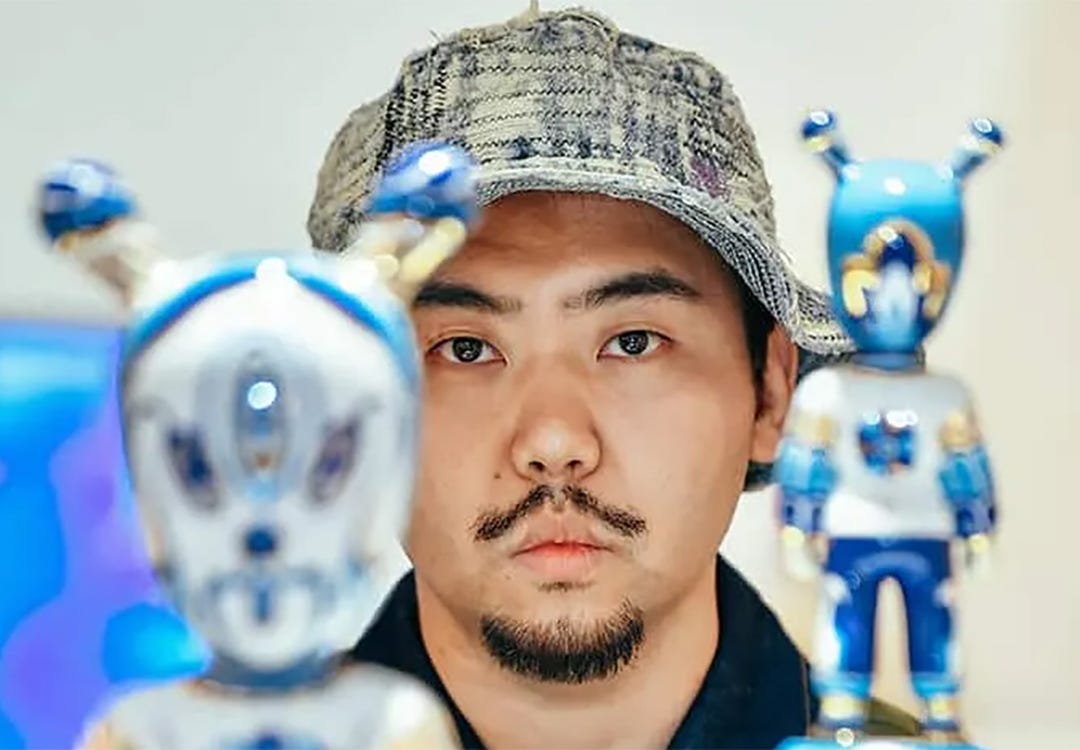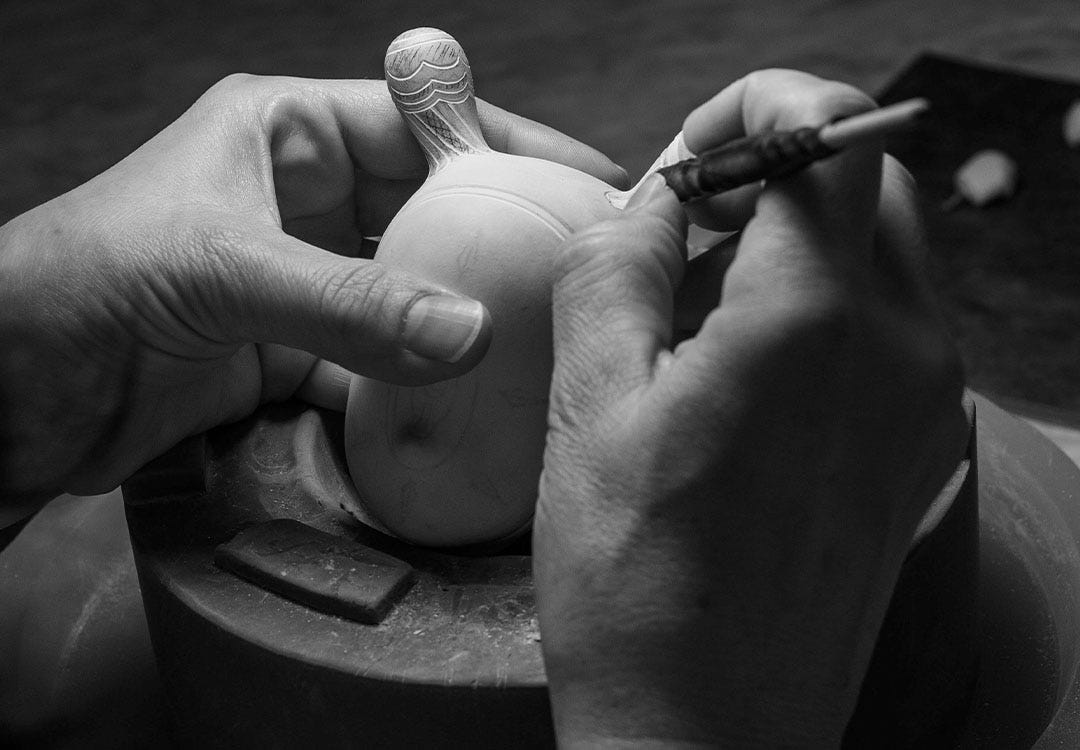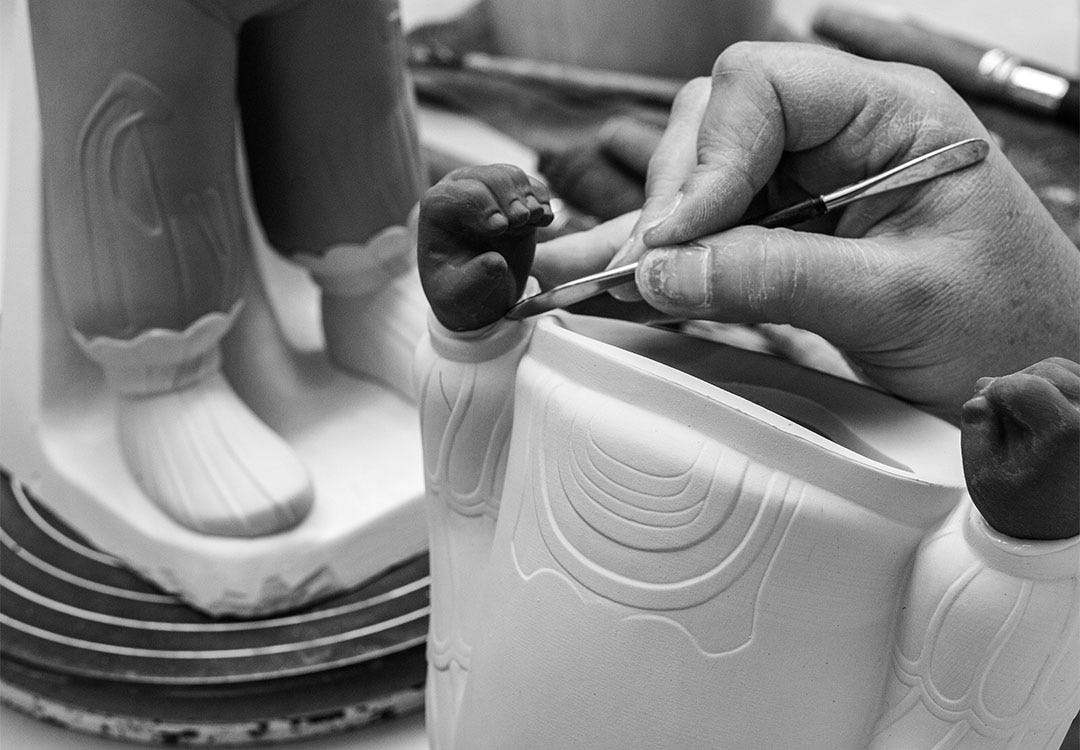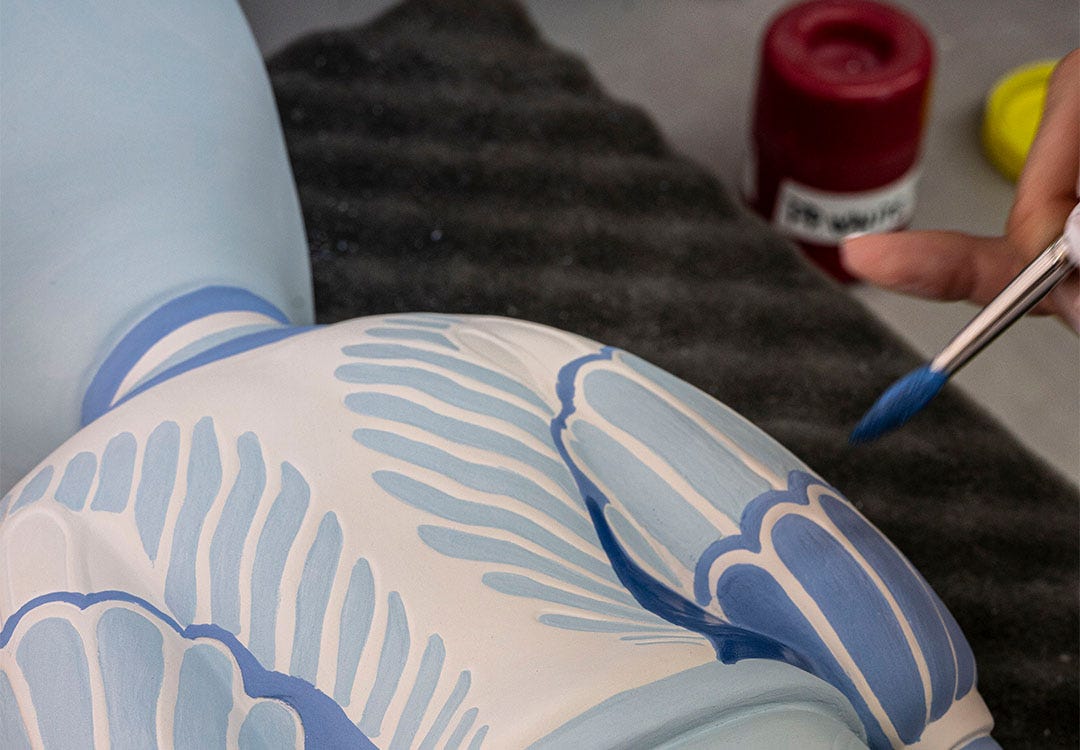Kzeng Jiang, a pop-surrealist artist known for his vibrant and radical style, brings his unique vision to the world of porcelain in collaboration with Lladró. In this interview, we delve into Jiang’s artistic journey, his influences, and his recent intervention on our signature piece, The Guest.
Discover how Jiang seamlessly blends his personal style with the essence of handmade porcelain design, creating stunning works that transcend time and cultural boundaries.
We know that drawing has been a very important means of expression for you ever since childhood. Do you remember what you liked to draw and why? What messages do you want to convey with your creations today?
I started learning how to draw when I was six. I remember that my art teacher would ask us to create mixed media collages, and draw simple ice cream packaging designs, but I didn’t know that they were packaging designs at that time. The teacher also taught us how to draw ancient Chinese totems. Because of where I was born, I grew up exposed to a lot of totem patterns and cultural characteristics of different ethnic groups painted on many buildings in my hometown. This naturally multicultural environment is probably what has enabled me to blend different cultures together, and I was fortunate to be born in such an environment. I’ve been immensely interested in Chinese culture since my childhood. I then tried different approaches to reinterpret these cultural totems.
My current works are based on Eastern culture and incorporate more philosophical ideas to attain a balance between Eastern and Western cultures. I want my works to transcend the constraints of time. I hope that when people in the future see them 100 years from now, they will still be works of beauty which resonate with people. I also hope that the works I create will be a microcosm of our current era. I believe that good works can stand the test of time and I keep trying to focus my work in this direction.
Throughout your career, there have been many crossovers between your work and global companies. How do you manage to successfully fuse your personal style with the essence of each individual brand? What interests you most about the process?
First of all, I think it’s a challenge to blend your own style with the essence of different brands. You must first treat it as you would anything else. You must also understand the history of the different brands so that you can balance your own style with the spirit which the brands are seeking to convey. I love working with different types of brands and I really enjoy the process of collaboration. It allows me to break out of my old cognitive system and learn different things. Of course, I feel that when I work with different brands, the products of the brands become a great medium to familiarize more people with my artistic ideas. I especially enjoy the process of integrating my works with different mediums. As my visual design works are similar in nature, the works may gain new vitality in the process of collaboration with other brands when the same works are expressed in different ways.
What artists and illustrators from all ages have influenced you the most?
Salvador Dalí, Hieronymus Bosch, Pablo Picasso, and Andy Warhol are artists who have strongly influenced me.
When people speak about your graphic and visual style, they often use terms like vibrant, radical or revolutionary. How do you apply these concepts to interior design in the places you live or work?
It may be attributed to my preference for highly saturated colors. The areas that I work on are merely minor decorations with these colors. Most works are portrayed through shades of black, white, and gray created in the workshop.
Lladró has been in China for 35 years and has very close bonds with the country. Did you know the brand? What was your first contact with it?
I’ve learned about the Lladró brand on several occasions. The second occasion was the Lladró flagship store I saw in Ginza when I traveled to Tokyo eight years ago. «The Guest» sculpture I saw in the store was particularly appealing. Third, when Jaime Hayon’s exhibition ran in Shanghai a few years ago, I was invited to serve as a special guest in a seminar. I also learned about the Lladró brand.
Your work is at the cutting-edge of illustration and in recent years you have taken your personal universe to various different supports. Had you worked before on such a natural and handcrafted material as porcelain? What is the importance for you of the canvas on which you draw?
I’ve never used natural hand-made materials such as porcelain before because it is a completely foreign form of creation for me.
Drawing is a very enjoyable process for me. The canvas is like a state of meditation and it is an awe-inspiring moment when something is perfectly created from nothing. The sense of satisfaction and achievement that derives from the final result is truly incomparable.
Do you think that your artistic self is reflected in the decoration of these places? What elements of design or decoration make you feel better or connect with your emotions?
I like to incorporate my favorite colors into my works and creative ideas. The unique Eastern philosophies are echoed in these areas. I generally prefer works with different patterns or symmetries, which make me feel peaceful inside and give me a strong sense of inner strength.
You have made an intervention on one of the signature pieces of Lladró’s New Concept line. Can you tell us something about the collaboration?
I am very grateful for Lladró’s invitation to create a part of «The Guest» series. I was excited when I learned that I was the first Chinese artist they had worked with. As I had never worked with a porcelain brand before, it provided me with an opportunity to challenge myself. From the start of the design drawing to the final work, I repeatedly went over every detail of the work. We supported each other in the communication process to achieve the best results. I am particularly grateful to Lladró’s design team and sculptors. After several rounds of verification of the special colors and adjustments of the colors of materials, my work was finally unveiled to the world in its best form.
What was your main source of inspiration?
As I have worked on my own brand-new series «Space Can Blue and White Porcelain Series» since 2019, and my series of works from the perspective of the universe is a series that transcends time and spatial boundaries, when I learned that «The Guest» was also to be a sculpture, I immediately thought it would be a great idea to combine both.
Did you study the interventions by your predecessors, like Paul Smith, Cavolo, Henn Kin, etc?
I learned about their works and I feel that their works are great combinations of their unique visual symbols and their creative ideas. As a result, they resonate with viewers. The resonance is natural and has strong characteristics of the artist’s local culture.
What do your two versions of The Guest represent?
My two works are inherently Chinese and I used two symbols. The first is the Chinese face paint symbol for which I reinterpreted the form of the face paint with elements of my own series of works from the perspective of the universe. The form is my attempt to attain a sense of balance between the East and the West. Second, I used floral patterns from Song Dynasty porcelain. I redesigned the two cultural symbols to create my own new artistic language. Certain ancient porcelain included shades of gold in them to create a sense of prestige. The shades of gold I used in the creation of the blue and white porcelain piece increased the visual shock in the visual language. The use of shades of blue then balances the overall visual effect. The first work contains a deity-like figure. As you can see, he has three eyes that allows him to view the past and future as though he is a messenger that transcends both. The flower on his chest looks like a rotating engine. When the flower rotates, the wings made of floral patterns behind him will open and take flight to spirit you across the world.
The second work appears to be a child of his who has not yet grown up. However, when you view it horizontally, it appears to be a pair of eyes.
These two works use simple elements in overlapping combinations to portray the Eastern philosophical idea of greatness in simplicity. The entire work may appear to be a dazzling and complicated world, but if you look closely, it is merely a circle and the leaf of a flower. I use the work to show people that regardless of how complicated the world around you may be, you ultimately have to return to the place you started and your core values. When the two works are placed together, I hope to gain a sense of peace which also empowers people.
On various occasions your artistic projects have focused on the Chinese Zodiac, paying tribute to an age-old cultural heritage and bringing it up to date through a transgressive approach. To a certain extent, Lladró has followed a similar path in the evolution of its Chinese Zodiac collection, which reflects the admiration of Lladró artists for other cultures and traditions as well as their love of exploring new aesthetic paths from a more updated and abstract perspective. What do traditions mean for you and how do you think they can be kept alive without losing their essence?
Tradition is a foundation for me and the most basic, authentic, and original form of existence. It is like the most important person that supports you as you constantly move forward and see the relationship and distinction between you both.
I believe that the most basic and authentic thing must be retained and passed on. It is equivalent to constantly retaining positive culture in history but integrating the essence and symbols of the era. It is truly a difficult task to combine the two and create works that meet the aesthetic values of the era while also retaining traditional core values. I’ve always worked hard to achieve this.
